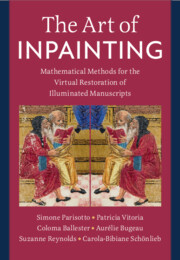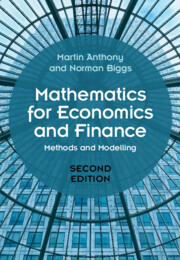Refine search
Actions for selected content:
115 results
Chapter 3 - Einstein on the Beach
-
- Book:
- American Performance in 1976
- Published online:
- 27 November 2025
- Print publication:
- 11 December 2025, pp 156-214
-
- Chapter
- Export citation
Chapter 3 - Ørsted, Mach, and the History of Thought Experiment
- from Part I - The Origins of “Thought Experiment” in Kant and Ørsted
-
- Book:
- Kierkegaard and the Structure of Imagination
- Published online:
- 26 September 2025
- Print publication:
- 16 October 2025, pp 47-62
-
- Chapter
- Export citation
Chapter 4 - Pétrus, Dante, Pierre and Bernard
- from Part I - Finding One’s Way
-
-
- Book:
- Boulez in Context
- Published online:
- 08 July 2025
- Print publication:
- 24 July 2025, pp 36-46
-
- Chapter
- Export citation
Chapter 23 - Counting Music
- from Part IV - Creative Engagements beyond Music
-
-
- Book:
- Boulez in Context
- Published online:
- 08 July 2025
- Print publication:
- 24 July 2025, pp 244-252
-
- Chapter
- Export citation

The Art of Inpainting
- Mathematical Methods for the Virtual Restoration of Illuminated Manuscripts
-
- Published online:
- 22 May 2025
- Print publication:
- 22 May 2025
1 - Introduction
-
- Book:
- The Art of Inpainting
- Published online:
- 22 May 2025
- Print publication:
- 22 May 2025, pp 1-12
-
- Chapter
- Export citation
Discerning Patterns in Medieval Chinese Polymathy Through Bibliometrics: Astronomy, Mathematics, and their Historical Sister Sciences
-
- Journal:
- Journal of Chinese History , First View
- Published online by Cambridge University Press:
- 06 March 2025, pp. 1-26
-
- Article
-
- You have access
- Open access
- HTML
- Export citation
Chapter 7 - The Emergence of an Ars mensoria
- from Part IV
-
- Book:
- The <I>artes</I> and the Emergence of a Scientific Culture in the Early Roman Empire
- Published online:
- 22 March 2025
- Print publication:
- 13 February 2025, pp 316-371
-
- Chapter
- Export citation
1 - Music and Mathematics in an Interconnected Web of Cosmic Relations
- from Part I - Context
-
- Book:
- The Science of Music
- Published online:
- 19 December 2024
- Print publication:
- 02 January 2025, pp 27-47
-
- Chapter
- Export citation
4 - Al-Urmawi Goes to the Mustansiriyya: How to Learn the Science of Music
- from Part I - Context
-
- Book:
- The Science of Music
- Published online:
- 19 December 2024
- Print publication:
- 02 January 2025, pp 97-112
-
- Chapter
- Export citation
12 - Menippus Goes to the Moon: Fantastical Astronomy and Lucian’s Scientific Imagination
- from Part II
-
-
- Book:
- The Cambridge Companion to Lucian
- Published online:
- 07 November 2024
- Print publication:
- 21 November 2024, pp 247-267
-
- Chapter
- Export citation
Introduction: What Is Logic?
-
- Book:
- An Introduction to Classical and Modal Logics
- Published online:
- 08 February 2025
- Print publication:
- 21 November 2024, pp 1-4
-
- Chapter
- Export citation
10 - The Allocation of Scarce Resources
- from Part II - Economics
-
- Book:
- Five Times Faster
- Published online:
- 24 October 2024
- Print publication:
- 07 November 2024, pp 109-123
-
- Chapter
- Export citation
Chapter 6 - Teaching in the linguistically diverse classroom
- from Part 3 - Teaching in the linguistically diverse classroom
-
- Book:
- Teaching for Linguistic Diversity in Schools
- Published online:
- 25 October 2024
- Print publication:
- 27 June 2024, pp 111-131
-
- Chapter
- Export citation

Mathematics for Economics and Finance
- Methods and Modelling
-
- Published online:
- 24 May 2024
- Print publication:
- 30 May 2024
-
- Textbook
- Export citation
How Can Data Science Contribute to Understanding the Khipu Code?
-
- Journal:
- Latin American Antiquity / Volume 36 / Issue 2 / June 2025
- Published online by Cambridge University Press:
- 06 May 2024, pp. 497-516
- Print publication:
- June 2025
-
- Article
- Export citation
Chapter 3 - Early Learning in Plato, Republic 7
-
-
- Book:
- Conceptualising Concepts in Greek Philosophy
- Published online:
- 25 April 2024
- Print publication:
- 02 May 2024, pp 56-73
-
- Chapter
-
- You have access
- Open access
- HTML
- Export citation
Introduction
-
- Book:
- The Art of Uncertainty
- Published online:
- 29 February 2024
- Print publication:
- 07 March 2024, pp 1-36
-
- Chapter
- Export citation

The Art of Uncertainty
- Probable Realism and the Victorian Novel
-
- Published online:
- 29 February 2024
- Print publication:
- 07 March 2024
Chapter 11 - STEM education in early childhood
- from Part 2 - How can I enhance children’s learning of science?
-
-
- Book:
- Science in Early Childhood
- Published online:
- 13 December 2023
- Print publication:
- 10 January 2024, pp 163-180
-
- Chapter
- Export citation
